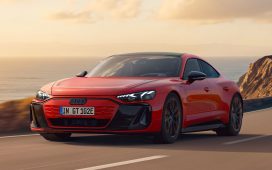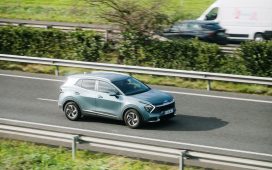The DB12 is bigger and wider and more chiselled in its muscular features but no less evocatively proportioned – handsome, perhaps, rather than pretty. For the Granturismo, however, we seem to be in tougher territory.
Its proportions aren’t quite perfect. Oddly long-looking in its wraparound ‘cofango’ bonnet, it seems that little bit drawn and stretched.
Lower-waisted and less aggressive than the DB12, definitely, but also saddled with just a hint of visual awkwardness.
The Maserati is a bigger car than either the Aston or the Ferrari, and that gives it some relative strengths (to which we will come), but, albeit narrowly, it misses their standard for outright design allure.
Powertrains
What the Maserati counters with might be very useful in these wintry test conditions: part-time four-wheel drive.

The junior member of this GT trio in terms of both power and price, it offers six turbocharged cylinders instead of eight. But on these roads, especially when there are plenty of bumps, cambers and puddles with which to contend, how you use what you’ve got could well prove to be more important than the number of horses you brought along in the first place.
The DB12 certainly brought plenty. Aston’s new Mercedes-AMG-supplied twin-turbocharged 4.0-litre V8 is of a different order of potency than the one that served hitherto in the DB11 (and indeed in the Vantage) and apparently gives the car a class-leading power-to-weight ratio – a claim that, compared with the Roma at least, my back-of-the-envelope maths indeed confirms.










